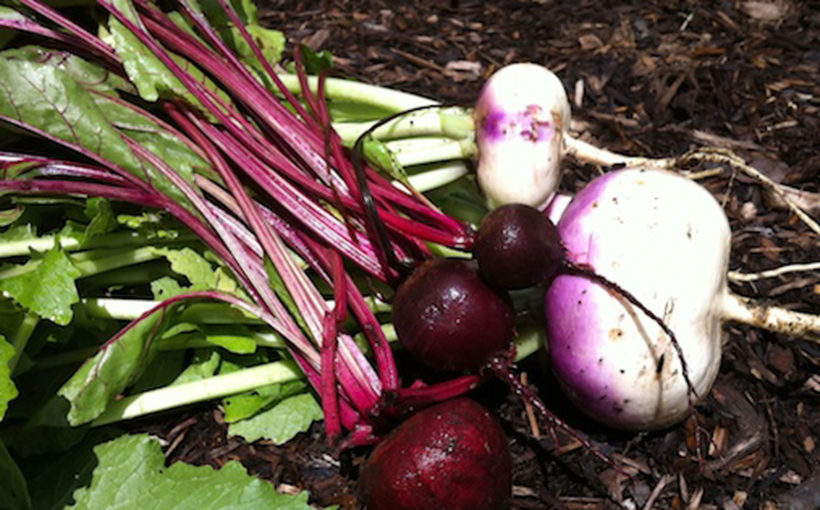Believe it or not, you can harvest fresh veggies until Thanksgiving if you plant in July and August! So even while you’re harvesting beans, tomatoes, and other produce from the summer garden, get out those seed packets that are left from this spring.
Why plant fall vegetables in summer?
You want your plants to grow fast, but harvest slow. Plant in summer so that cool-weather vegetables do most of their growing while the days are still long. Their growth slows as the temperatures drop and the days grow shorter.
Many cool-weather crops actually do even better in fall than in spring. Broccoli, cabbage, and Brussels sprouts, for example, benefit from the long, slow cool-down of late summer into fall.
As your spring crops finish up, cut down the peas, pull out the salad greens, and use that space for fall vegetables.
Which ones are fall vegetables?
Fall crops are those that are hardy (tolerate a hard frost) and semi-hardy (tolerate a light frost). They can be roughly grouped by which part of the plant we eat: the roots, leaves, and stems.
- Stems: cabbage, broccoli, cauliflower, kohlrabi, Brussels sprouts, etc.
- Greens: lettuce, spinach, mustard, mache, collards, arugula, etc.
- Root vegetables: carrots, beets, turnips, radish, etc.
For a more complete list, check out Purdue University Cooperative Extension Service’s publication about fall vegetable gardens.
When are they planted?
In central Indiana, frost generally arrives around mid-October. The vast majority of fall crops should be in the ground no later than mid-August.
In July
In early July, start seeds inside for these crops. You’ll transplant these into the garden in August.
- Brussels sprouts
- broccoli
- cauliflower
- cabbage
- Chinese cabbage/bok choi
Direct sow these crops into the garden. Sow two or three rounds of each crop to extend the harvest.
- beets (semi-hardy): last sowing by mid-August
- carrots (semi-hardy): last sowing by mid-August
- collards (hardy): last sowing by late July
- kale (hardy): last sowing by mid-August
- kohlrabi (hardy) last sowing by mid-August
- turnips (hardy) last sowing by early August
Be sure to keep your seed bed moist, which can be a little tough during summer. If you need extra help preventing the bed from drying out, stretch shade cloth over the bed.
In August
Transplant out the plants you started inside in July:
- broccoli (hardy) last transplant by mid-August
- Brussels sprouts (hardy) last transplant by mid-August
- cabbage (hardy) last transplant by mid-August
- cauliflower (semi-hardy) last transplant by mid-August
- Chinese cabbage (semi-hardy) last transplant by mid-August
Direct sow even more veggies in the garden:
- leaf lettuce (semi-hardy) last sowing by end of August
- mâche (hardy) sow between mid-August and mid-September
- radish (hardy) last sowing by mid-September
- spinach (hardy) last sowing by end of August
Once your plants come up, be sure to mulch them to retain soil moisture and discourage weeds. As winter approaches, a thick layer of mulch over root crops like carrots mean you can pull vegetables even if most of the ground is frozen!
Harvest regularly, and enjoy your bounty even after most gardens have been put to bed for the year!
Need some help?
We can help you create a three-season planting schedule to maximize your harvest. Contact us today.
